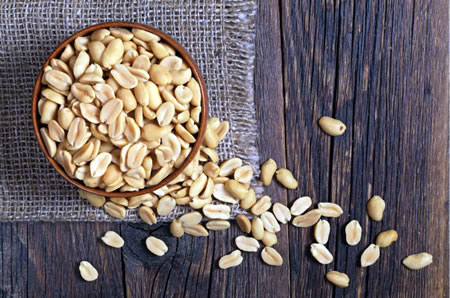Peanuts have a strong nutritional profile. They are an excellent source of plant-based protein, fiber, and many key vitamins and minerals.
Peanuts come in many forms, including roasted, salted, chocolate-coated, and as peanut butter. Different types have different nutritional profiles and various health benefits.
Along with their healthful nutritional profile, peanuts are a calorie-rich food, so they are most healthful when enjoyed in moderation.
In this article, we provide the nutritional profile of peanuts, their health benefits, and how different types compare.
NURTW: Yasin unites Ejiogbe, Tokyo in Ibadan
Peanuts are most healthful when they are in their raw form.
Peanuts are an especially good source of healthful fats, protein, and fiber. They also contain plenty of potassium, phosphorous, magnesium, and B vitamins. Despite being high in calories, peanuts are nutrient-rich and low in carbohydrates.
According to the United States Department of Agriculture (USDA), 100 grams of raw peanuts contain 567 calories and the following nutrients in grams (g), milligrams (mg), or micrograms (mcg):
The mixture of healthful fats, protein, and fiber in peanuts means they provide nutritional benefits and make a person feel fuller for longer. This makes peanuts a healthful, go-to snack when people compare them with chips, crackers, and other simple carbohydrate foods.
Below, we discuss the benefits of key nutrients in peanuts.
- Protein
Peanuts are an excellent source of plant-based protein, offering 25.8 g per 100 g of peanuts, or around half of a person’s daily protein needs.
The recommended daily allowance (RDA) for protein in adults is:
- 46 g for women
- 56 g for men
Protein is essential for building and repairing body cells. The amount of protein a person needs varies, depending on their age and activity level.
- Healthful fats
Peanuts contain healthful fats that are an essential part of a nutritious diet.
Fatty acids are an essential part of every diet. Most of the fats in peanuts are monounsaturated and polyunsaturated fatty acids, which are a healthful type of fat.
According to the American Heart Association (AHA), consuming monounsaturated fats and polyunsaturated fats instead of saturated and trans fats can improve a person’s blood cholesterol levels. This, in turn, lowers the risk of heart disease and stroke.
There is also a small amount of saturated fat in peanuts. Saturated fat is less healthful than unsaturated or polyunsaturated. Doctors link too much saturated fat with cardiovascular disease. As a consequence, it is best to eat peanuts in moderation to get their optimal health benefits.
- Dietary fiber
Peanuts are a good source of dietary fiber. They contain 8.5 g per 100 g, which around one-quarter of a male’s recommended fiber intake or one-third for females.
The current Dietary Guidelines for Americans recommend that adults get the following amounts of fiber per day:
- 34 g for men
- 28 g for women
Fiber is a heart-healthful nutrient. The AHA report that eating fiber-rich foods improves blood cholesterol levels and lowers the risk of heart disease, stroke, obesity, and type 2 diabetes.
What are the most healthful nuts you can eat?
Different types of nuts offer different health benefits. Learn about some of the most healthful nuts and their benefits here.
Which types of peanuts are most healthful?
Raw peanuts are the most healthful variety. Peanut butter is a great choice, offering a healthy nutritional profile and a range of health benefits.
Source:Medicalhealthnewstoday






